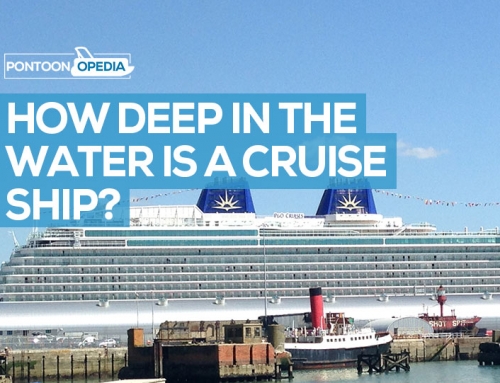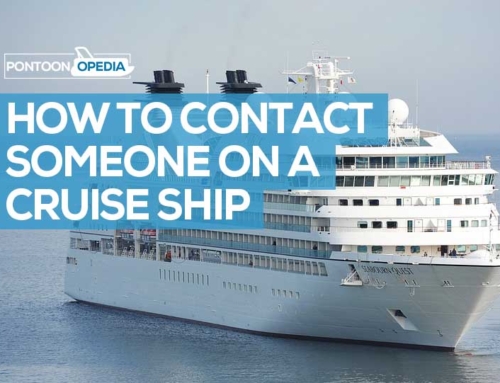I was on a cruise ship last month with my extended family and was confident I wouldn’t get afflicted with seasickness. I’d had it quite badly on my first ever cruise, so after that decided to take my time to research it and find out what the best deck on a cruise ship to avoid seasickness and tips to stop getting ill.
Where to stay on a cruise ship to avoid seasickness? The best place to stay on a cruise ship to avoid seasickness is in middle of the ship and on a lower deck. Seasickness is quite common on cruise ships, and there are some things you can do to reduce it.
Reading on, you will see how to choose the best deck and not just the middle spot on the ship. I will also go into some other ways you can help to avoid seasickness while on a cruise ship aside from staying at the middle where there is less movement.
What helps with seasickness on a cruise?
Cruising is great fun. The breeze and wide view of the sea with its creatures makes all time spent on water a memorable one. I prefer going on a cruise when I want to clear my head and luckily have managed to do a couple over the last few years.
In that time I’ve had to learn about what helps with seasickness on a cruise, and am going to share all of that information with you today.
Best place to on a cruise ship to avoid seasickness
As much as cruising is fun and entertaining, seasickness is troubling, frustrating, and can completely ruin what should be a memorable break. You won’t just feel like you just wasted money booking a cabin, but your whole-body system will function terribly.
If you are the type that is easily affected by motion such as when in a car or on plane, your chances of experiencing motion sickness is high. To still get on board in spite of this to enjoy and catch some fun, you need to make sure your booked cabin is at the middle of the ship.
Is forward or aft better for seasickness?
As an alternative in case you are booking late, consider the rear cabin. If none of these two locations are available, I will advise you to check elsewhere for your cruise ship or cancel the trip altogether.
The movement in the rear (aft) cabins will be less noticeable than if you were situated at the front (forward) of the cruise ship, and therefore aft is better for seasickness.
You are less likely to experience the movement of the ship at the middle unlike the front of the deck where most of the swaying and movement from the waves are experienced.
Best deck on cruise ship to avoid seasickness?
Not only should you just choose a cabin at the middle, make sure it also has a balcony to enjoy the fresh breeze from the sea. This will make you more relaxed. If your budget cannot afford it, choose a cabin with window. The view might be limited but you will not be denied of the fresh air.
I would also recommend that you try to get on a lower deck. These are the best decks on a cruise ship to avoid seasickness, as you won’t feel the ship’s movement as much, reducing the chance of motion sickness.
Also make sure you don’t choose an inside cabin. Feeling enclosed might make the seasickness worse or make you develop one if you are likely not to experience it in the first place.
If you do end up with an enclosed and interior cabin, make sure you spend time on the deck where possible to get some fresh air.
What causes seasickness?
The fact that you do not get motion sick while traveling on road or air does not mean you can’t on sea. Some cruisers who have spent considerable time on sea may experience it. It is not something that only affect certain folks.
Our sense organs have different functions yet, they all work together to identify specific things on the sea. When the messages sent by these organs about the same object or occurrence differs, the brain might get confused and you may experience some discomfort.
For instance, you are standing in a cabin and your eyes is relating to the brain the decks are stationary while the part of the ear responsible for balance is relating there is motion in the ship. The brain will get confused on which message to relay back.
Some cruisers only experience this within the first 48 hours and later have their body system functions restored. Others that are unable to achieve such physiological state are less likely to enjoy the remainder of the trip.
Seasickness can manifest in the form of dizziness, headache, profuse sweating, and nausea. Some passengers may even vomit.
How to prevent cruise ship seasickness
For optimal preparation for your cruising and assurance of no seasickness, there are other things you could do to prevent the experience.
1. Avoid noisy areas
With the advancement of technology, cruise ships are now equipped with stabilizers that significantly reduces the pitch and roll of the vessel. To further improve your defense against the seasickness, make sure you are in the lower deck. This space is closer to the waterline and experiences the least movement.
You may be tricked to choosing just any place so far it is a lower deck but that would be a mistake if it is beneath a high traffic area with activities like night deck parties or self-service launderettes.
Noise triggers or make seasickness worse. Cabin in-between passenger decks is best. The deck above and below will help prevent the noise reaching your cabin.
2. Consider some form of medication
There are over the counter medications you can take to prevent seasickness. Bonine and Dramamine are examples of such. If you are the type that do not experience it, I will advise you always take some along in case.
You can also use Seabands. They are like normal wrist bands only that the are designed to press some regions on the wrist detected by acupuncturists to reduce nausea and vomiting which are some of the symptoms of seasickness.
I have seen a handful of people on cruise wearing this. There are also seasickness patches you can wear behind your ear.
Cruise ships offers medications at their purser’s office for free. You may also consult your doctor for proper diagnoses and prescription. Ginger is also an alternative remedy.
3. Pick a cruise ship which stops frequently
Going on sea cruise for many days is not a problem. The problem is when you are on a ship without getting off for two or more days. I can tell you from experience, this will increase your chance of getting seasickness. It is even worse if such voyage is your first.
Before booking, check the itinerary if it has many ports. When ships stop on the way, it gives you time to refresh and see something new on land aside from sea. This gives your brain a new wave pattern instead of being bored of seeing same thing over and over again.
4. Choose a bigger cruise ship
Seasickness is best reduced when you are able to work around notably change positions such as going to the balcony in a big ship to experience fresh air.
But when you are on a smaller vessel, the space is limited and the motion of the ship is more felt. This can increase your chances of getting sea sickness.
5. Avoid drinking alcohol
It is understandable that the time spent on the ship is meant to be enjoyed. At the start of the voyage, it is advisable to take little or no alcohol. If you then discover you are feeling ok as the voyage continues, you can then enjoy your party.
I don’t drink before going on board and if I would drink throughout the cruise, it is always minimal compared to the number of bottles I consume back home.
6. Avoid reading and digital screens
Being alone on a cruise might tempt you to get your head into books or glue your eyes to your smartphone screen playing games.
This can make you sick because the movement of the ship will make things uneasy to capture by your eyes. This may affect the message relayed to the brain and thus might result in seasickness.
7. Mind over matter can help
Some passengers feel anxious whenever they notice anything abnormal on the ship, such as bad weather. Things like this are perfectly normal, and the ship’s crew will have everything in hand. You should try to relax and enjoy the cruise.
I’ve also noticed that when people start talking about seasickness, it can actually make you start feeling ill. Take your time to make every necessary preparation to avoid it and then walk into your cabin with confidence and put it out of your mind.
Sometimes, it is a matter of the state of mind than the environment.
Is seasickness common on cruises?
Seasickness used to be a lot more common on cruise ships than it is today. The modern cruise ships have stabilizers built in to them which reduces how much the ship moves from side to side.
A spokesperson from Royal Caribbean Cruises (visit website), said this to the press in 2017:
“Most new cruisers have no problems with seasickness on our ships, due to their size, navigational avoidance of storms, and stabilisers,”
The last word…
Despite what you might have heard, you can’t die from seasickness, but you can get very ill.
The tips above explain where to stay on a cruise ship to avoid seasickness, what the best deck is, and whether forward of aft is the best position. Apply these rules when you next book a cruise and it should help prevent you feeling ill whilst at sea.






